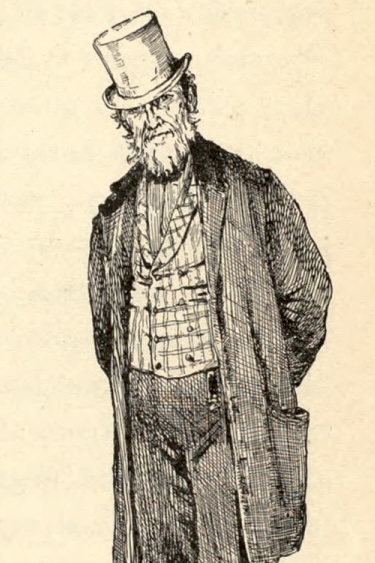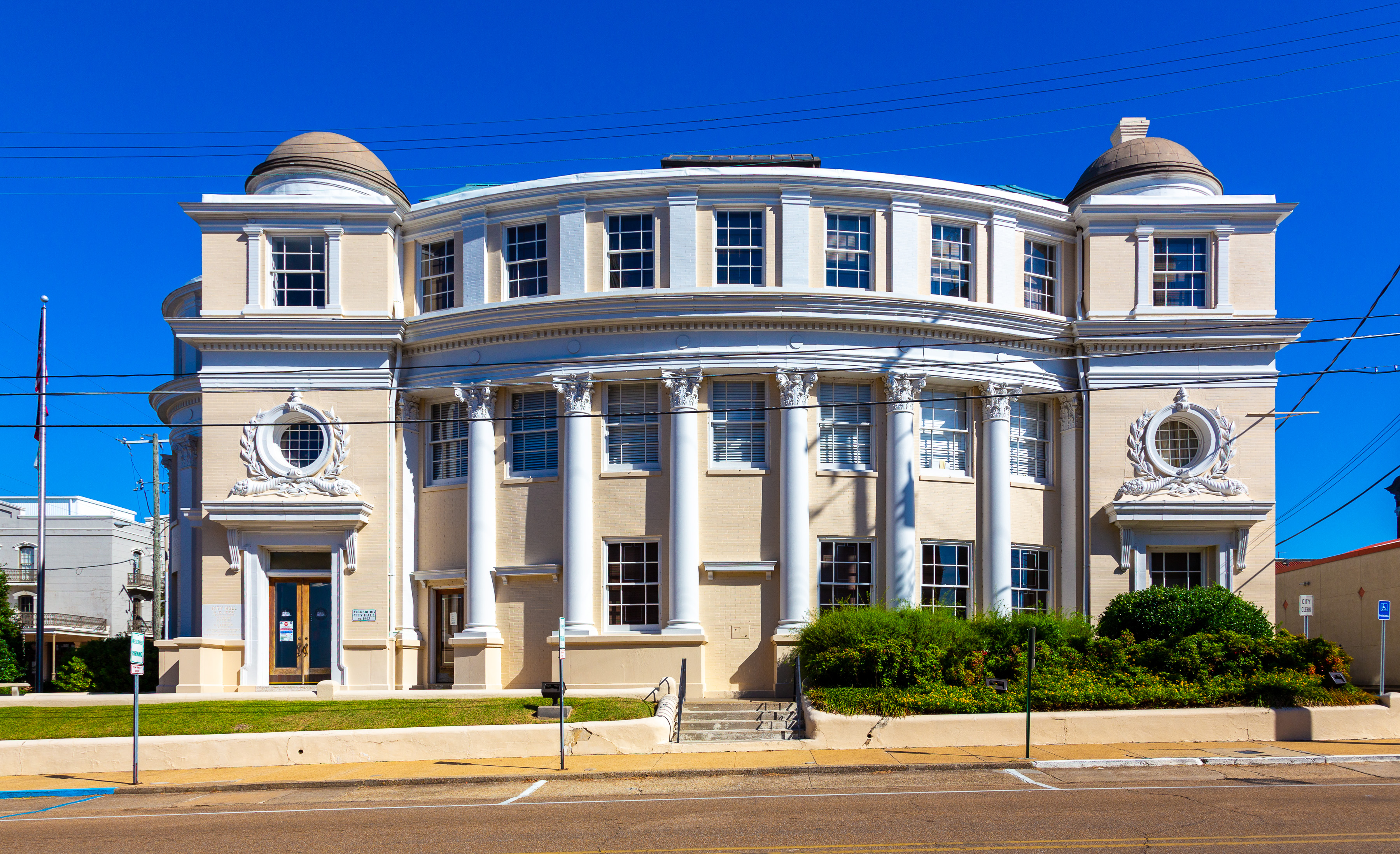|
John W. Anderson (slave Trader)
John W. Anderson (1801?–September 20, 1836) was an American interstate slave trader and farmer based near Maysville, Kentucky, Maysville, Mason County, Kentucky. Chief Justice of the U.S. Supreme Court John Marshall was an investor who funded Anderson's slave speculations. Anderson was involved in the establishment of the Forks of the Road slave market in 1833. Anderson was elected to the Kentucky General Assembly in 1836 but died before he could take office. A log-built slave jail established on Anderson's property is now on exhibit in the National Underground Railroad Freedom Center and is believed to be the only surviving rural American slave jail in existence. Biography Anderson was probably a Virginian from Amelia County, Virginia, Amelia County. He may have initially been involved in tobacco production and shipment, but soon added slave trading as an additional source of income. In 1825 he was able to purchase 100 acres near what is now Walton Pike and Kentucky Route ... [...More Info...] [...Related Items...] OR: [Wikipedia] [Google] [Baidu] |
1826–1837 Cholera Pandemic
The second cholera pandemic (1826–1837), also known as the Asiatic cholera pandemic, was a cholera pandemic that reached from India across Western Asia to Europe, Great Britain, and the Americas, as well as east to China and Japan.Note: The second pandemic started in India and reached Russia by 1830, then spread into Finland and Poland. A two-year outbreak began in England in October 1831 and claimed 22,000 lives. Irish immigrants fleeing poverty and the Great Famine carried the disease from Europe to North America. Soon after the immigrants' arrival in Canada in the summer of 1832, 1,220 people died in Montreal and another 1,000 across Quebec. The disease entered the U.S. by ship traffic through Detroit and New York City. Spread by ship passengers, it reached Latin America by 1833. Another outbreak across England and Wales began in 1848, killing 52,000 over two years. Cholera caused more deaths, more quickly, than any other epidemic disease in the 19th century . The med ... [...More Info...] [...Related Items...] OR: [Wikipedia] [Google] [Baidu] |
1836 Deaths
Events January–March * January 1 – Queen Maria II of Portugal marries Prince Ferdinand Augustus Francis Anthony of Saxe-Coburg-Gotha. * January 5 – Davy Crockett arrives in Texas. * January 12 ** , with Charles Darwin on board, reaches Sydney. ** Will County, Illinois, is formed. * February 8 – London and Greenwich Railway opens its first section, the first railway in London, England. * February 16 – A fire at the Lahaman Theatre in Saint Petersburg kills 126 people."Fires, Great", in ''The Insurance Cyclopeadia: Being an Historical Treasury of Events and Circumstances Connected with the Origin and Progress of Insurance'', Cornelius Walford, ed. (C. and E. Layton, 1876) p76 * February 23 – Texas Revolution: The Battle of the Alamo begins, with an American settler army surrounded by the Mexican Army, under Santa Anna. * February 25 – Samuel Colt receives a United States patent for the Colt revolver, the first revolving barrel multishot firearm. * Marc ... [...More Info...] [...Related Items...] OR: [Wikipedia] [Google] [Baidu] |
Bibliography Of The Slave Trade In The United States
This is a bibliography of works regarding the internal or domestic slave trade in the United States (1776–1865, with a measurable increase in activity after 1808, following the Act Prohibiting Importation of Slaves). General * * * * * Calomiris, Charles W. and Pritchett, Jonathan B., Preserving Slave Families for Profit: Traders' Incentives and Pricing in the New Orleans Slave Market (August 2008). NBER Working Paper No. w14281, Available at SSRN: * * * * * * * * * * ** () ** Gudmestad, Robert Harold, "A Troublesome Commerce: The Interstate Slave Trade, 1808-1840." (1999). ''LSU Historical Dissertations and Theses''. 6941. https://repository.lsu.edu/gradschool_disstheses/6941 * * * * * * * * * * * * * Miller, William L. A Note on the Importance of the Interstate Slave Trade of the Ante Bellum South Journal of Political Economy 1965 73:2, 181-187 * * * Thomas D. Russell, Articles Sell Best Singly: The Disruption of Slave Families at Court ... [...More Info...] [...Related Items...] OR: [Wikipedia] [Google] [Baidu] |
History Of Slavery In Kentucky
The history of slavery in Kentucky dates from the earliest permanent European settlements in the state, until the end of the Civil War. Kentucky was classified as the Upper South or a border state, and enslaved African Americans represented 24% by 1830, but declined to 19.5% by 1860 on the eve of the Civil War. The majority of enslaved people in Kentucky were concentrated in the cities of Louisville and Lexington, in the fertile Bluegrass Region as well the Jackson Purchase, both the largest hemp- and tobacco-producing areas in the state. In addition, many enslaved people lived in the Ohio River counties where they were most often used in skilled trades or as house servants. Few people lived in slavery in the mountainous regions of eastern and southeastern Kentucky. Those that did that were held in eastern and southeastern Kentucky served primarily as artisans and service workers in towns. As a border state positioned between free states to the north and fellow slave owning ... [...More Info...] [...Related Items...] OR: [Wikipedia] [Google] [Baidu] |
List Of Slave Traders Of The United States
This is a list of slave traders of the United States, people whose occupation or business was the slave trade in the United States, i.e. the buying and selling of human chattel as commodities, primarily African-American people in the Southern United States, from the United States Declaration of Independence in 1776 until the defeat of the Confederate States of America in 1865. The Act Prohibiting Importation of Slaves was passed in 1808 under the so-called Star-Spangled Banner flag, when there were 15 states in the Union, closing the transatlantic slave trade and setting the stage for the interstate slave trade in the U.S. Over 50 years later, in 1865, the last American slave sale was made somewhere in the rebel Confederacy. In the intervening years, the politics surrounding the addition of 20 new states to the Union had been almost overwhelmingly dominated by whether or not those states would have legal slavery. Slavery was widespread, so slave trading was widespread, and ... [...More Info...] [...Related Items...] OR: [Wikipedia] [Google] [Baidu] |
Tobacco Barn
The tobacco barn, a type of functionally classified barn found in the USA, was once an essential ingredient in the process of air-curing tobacco. In the 21st century they are fast disappearing from the landscape in places where they were once ubiquitous. The barns have declined with the tobacco industry in general, and U.S. States such as Maryland actively discourage tobacco farming. When the US tobacco industry was at its height, tobacco barns were found everywhere the crop was grown. Tobacco barns were as unique as each area in which they were erected, and there is no one design that can be described as a tobacco barn. History The terminology "tobacco barn" has been used to describe myriad structures in the USA. Buildings used for strictly tobacco curing, buildings that have multiple agricultural uses, and dilapidated barns, among others, have all been called tobacco barns at one time or another. In the Connecticut River Valley (Tobacco Valley) which extends through Connecticut, ... [...More Info...] [...Related Items...] OR: [Wikipedia] [Google] [Baidu] |
Whig Party (United States)
The Whig Party was a political party in the United States during the middle of the 19th century. Alongside the slightly larger Democratic Party, it was one of the two major parties in the United States between the late 1830s and the early 1850s as part of the Second Party System. Four presidents were affiliated with the Whig Party for at least part of their terms. Other prominent members of the Whig Party include Henry Clay, Daniel Webster, Rufus Choate, William Seward, John J. Crittenden, and John Quincy Adams. The Whig base of support was centered among entrepreneurs, professionals, planters, social reformers, devout Protestants, and the emerging urban middle class. It had much less backing from poor farmers and unskilled workers. The party was critical of Manifest Destiny, territorial expansion into Texas and the Southwest, and the Mexican-American War. It disliked strong presidential power as exhibited by Jackson and Polk, and preferred Congressional dominance in ... [...More Info...] [...Related Items...] OR: [Wikipedia] [Google] [Baidu] |
Vicksburg, Mississippi
Vicksburg is a historic city in Warren County, Mississippi, United States. It is the county seat, and the population at the 2010 census was 23,856. Located on a high bluff on the east bank of the Mississippi River across from Louisiana, Vicksburg was built by French colonists in 1719, and the outpost withstood an attack from the native Natchez people. It was incorporated as Vicksburg in 1825 after Methodist missionary Newitt Vick. During the American Civil War, it was a key Confederate river-port, and its July 1863 surrender to Ulysses S. Grant, along with the concurrent Battle of Gettysburg, marked the turning-point of the war. The city is home to three large installations of the United States Army Corps of Engineers, which has often been involved in local flood control. Status Vicksburg is the only city in, and the county seat of, Warren County, Mississippi, United States. It is located northwest of New Orleans at the confluence of the Mississippi and Yazoo rivers, ... [...More Info...] [...Related Items...] OR: [Wikipedia] [Google] [Baidu] |
Thomas McCargo
Thomas McCargo, also styled Thos. M'Cargo, (after 1854) was a 19th-century American slave trader who worked in Virginia, Kentucky, Mississippi and Louisiana. He is best remembered today for being one of the slave traders aboard the ''Creole case, Creole'', which was a Coastwise slave trade, coastwise slave ship that was commandeered by the enslaved men aboard and sailed to freedom in the British Caribbean. The takeover of the ''Creole'' is considered the most successful slave revolt in antebellum American history. Early life Thomas McCargo was likely one of the nine children of David and Nancy McCargo of Charlotte County, Virginia. Census records suggest he was born around 1790 (give or take five years), and he was more than likely born on his parents' farm in the south-central part of the state. Thomas McCargo was enumerated in the 1810 census of Charlotte County, Virginia, at which time he was between 16 and 25 years old; there was one enslaved person living in his household. ... [...More Info...] [...Related Items...] OR: [Wikipedia] [Google] [Baidu] |
Paul Pascal (slave Trader)
''Paysage oriental'' (Eastern landscape) - Musée des Beaux-Arts de Narbonne Paul Pascal (1839–1905) was a French landscape painter. He did landscape paintings of the Middle East and the Mediterranean coast with gouache. After he emigrated to the United States in 1893, he did paintings of the American wilderness with Native Americans. His artwork is exhibited in museums in France. Early life Paul Pascal was born in 1839 Toulouse, France. His family were ébénistes (cabinet-makers). He grew up in North America. Pascal graduated from the École des Beaux-Arts in Paris. Career Pascal began his career as a painter in Toulouse in the 1870s. By the 1880s, he moved to Paris, where he became a landscape painter. He mostly did landscapes of the Middle East, but also Italy, the Mediterranean coast and the Pyrenees. He only painted with gouache Gouache (; ), body color, or opaque watercolor is a water-medium paint consisting of natural pigment, water, a binding agent (usually gum ... [...More Info...] [...Related Items...] OR: [Wikipedia] [Google] [Baidu] |





